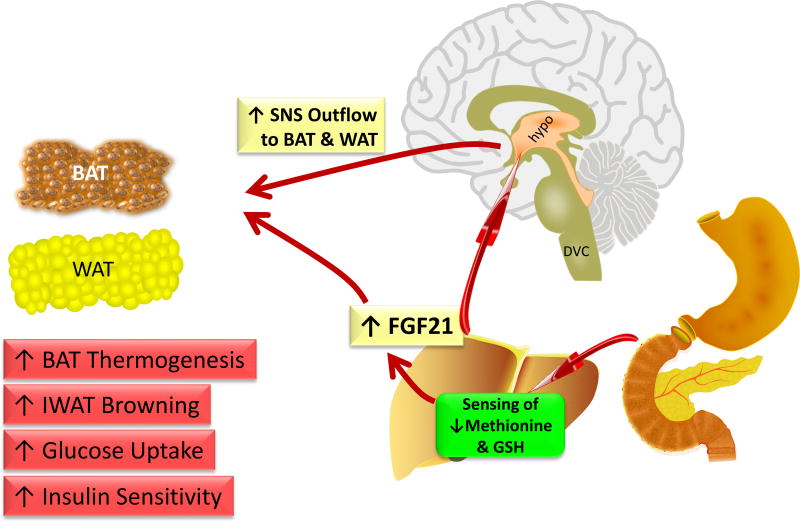Figure 3.
Model of proposed anatomical organization of the sensing and signaling mechanisms which produce the coordinated biochemical, transcriptional, physiological, and behavioral responses to dietary methionine restriction. The model proposes that the liver senses the reduction in plasma methionine and the associated decrease in hepatic glutathione signals to activate hepatic transcription and release of FGF21. The model proposes that increased SNS outflow to adipose tissue is produced by FGF21 acting in the hypothalamus where it may also regulate appetitive behavior. FGF21 is also proposed to act directly in adipose tissue to affect remodeling of white adipose tissue and activate thermogenesis in brown adipose tissue. FGF21 also acts directly in adipose tissue to enhance insulin sensitivity and increase glucose uptake and utilization. The net result is increased energy expenditure and decreased deposition of fat in adipose tissue. Abbreviations include: hypothalamus (hypo), dorsal vagal complex (DVC), brown adipose tissue (BAT), white adipose tissue (WAT), sympathetic nervous system (SNS)

